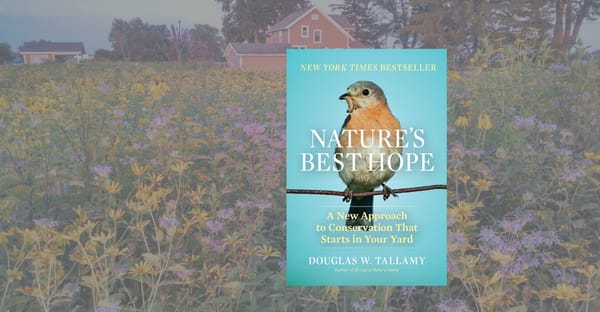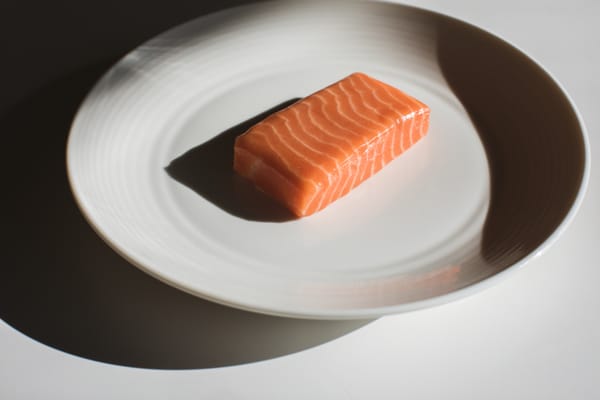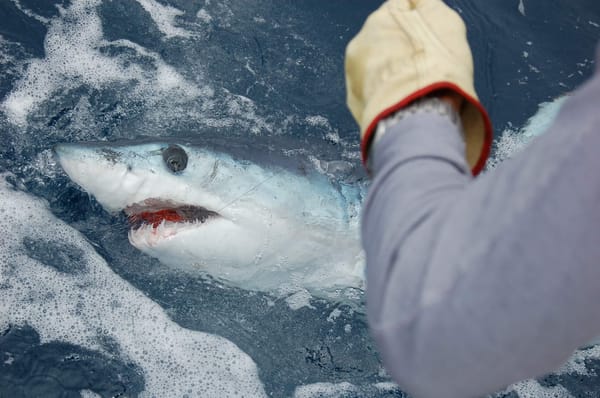Forest fires and fly fishing
Do forest fires hurt fly fishing? An update from the Clackamas river fire zone.
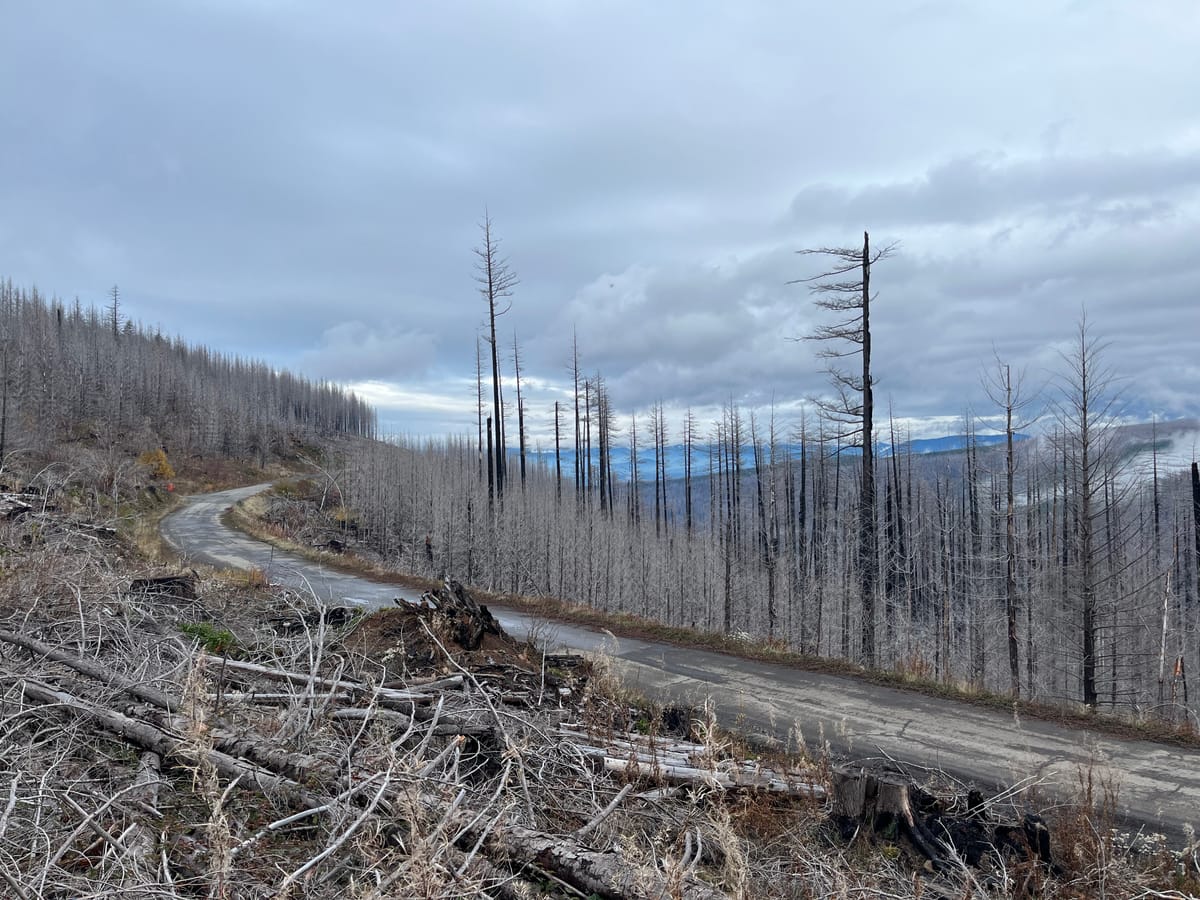

We had our first Fly Fishing Outing this weekend, in the Clackamas watershed. Five of us–including a pair of Intro to Fly Fishing alums and two other intermediate anglers—hiked and hacked our way through three different spots on two rivers looking for (and finding!) lively fish.
The quest for the elusive Mount Hood National Forest trout is a story for another day. What we found is an ecosystem still in balance, showing signs of resilience after a staggering series of blows.
An infernal Labor Day
It really felt like the end of the world. Brought on by heavy east winds, five megafires flared nearly simultaneously over Labor Day weekend in 2020, coming dangerously close to Oregon's major population centers. It was one of the worst fire years on record for the state. The region was inundated with smoke for weeks due to the forest fires, and thousands lost their homes. It was a very low ebb inside a very difficult year.
When officials added up the destruction, over 850,00 acres had burned in the forest fires. 138,000 acres of the Clackamas watershed alone were part of the Riverside Fire. Riverside burned directly along route 224, the main thoroughfare following the Clackamas River in the Mount Hood National Forest.
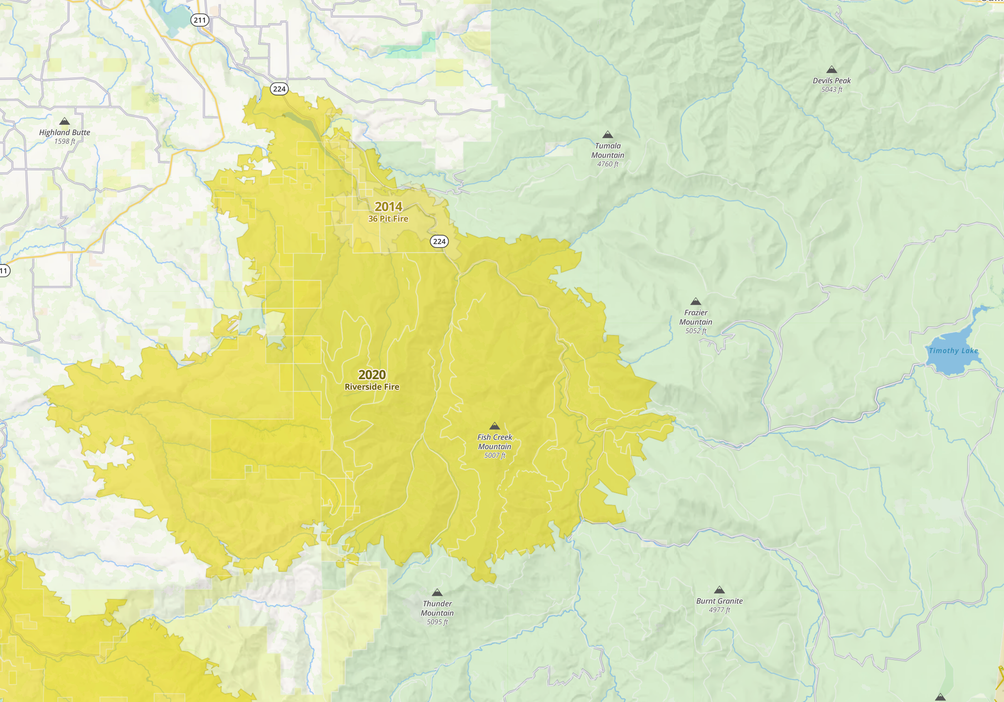
Do forest fires hurt fly fishing?
Forest fires can both help and hurt fly fishing. There are different near-term and long-term effects to forest fires, so it's difficult to say for sure just a few years afterward. It takes a long time and a lot of study to determine if the balance for a watershed is positive or negative after a forest fire event.
Near-term, to this layperson, the pros for trout fishing in the Upper Clackamas are greater than the cons. Mainly, that's due to reduced human presence. Much of the forest has been closed, with roads gated off and access difficult. This has given the fish a chance to spend several seasons without as much human pressure.
Secondarily, the landscape changes are all advantageous to fish habitat. There should be greater insect activity, with all the near-river undergrowth gain seen when larger trees are thinned out. And there should be more trees down in the river, which creates more cover where fish can hide, and can help slow the river down, diverting flow into pools and eddies.
Near-term, tree loss creates mudslide conditions that can inundate rivers with ash and silt, but it seems like the Clackamas has largely avoided this. (Though the roads didn't.)
Pros and cons of forest fires for fly fishing
| Forest fires help... | Forest fires hurt ... |
|---|---|
| Undergrowth rebounds and leads to greater insect activity | Less shading leads to warmer water temps |
| Reduced human activity leads to less fishing pressure | Fewer anchor trees lead to erosion and muddy streams |
| More downed trees slow the river and offer habitat | Fire debris acidifies streams and reduces insect life |
As lead author Ashley J. Rust wrote in their abstract to "Wildfire impacts on water quality, macroinvertebrate, and trout populations in the Upper Rio Grande," published in December 2019 in Forest Ecology and Management,
Despite elevated turbidity levels that persisted for three years downstream of severely burned areas, the aquatic ecosystem appears to have recovered. Insect diversity and fish populations recovered to pre-fire levels and were similar to control sites within three years. Results indicate aquatic ecosystems can be resilient to largescale disturbances, such as wildfire.
Rust's work was profiled by Amanda Monthei in Trout Unlimited's Trout magazine a few years later.
After the forest fire, bursting with life
Take a visit to the Clackamas fire area and you'll find the understory is booming.
Vine maples and ocean spray, plants that traditionally had to struggle through the shade of the big firs, have the sun all to themselves. They're responding by filling out the area around the river with green. Management agencies are taking this opportunity to push even further to eliminate noxious weeds (PDF), that out-compete native plants.
Smaller wildflowers are taking advantage, too. At the moment, the streamside zone is a bounty of blooms.
As I watched the anglers in the late afternoon, I kept half-an-eye on a stand of wildflowers on the beach. I counted five different species of butterfly feasting on maiden's tears and peavine in about forty square feet. Along the trail, thousands of foam spittlebug nests adorned new shoots.
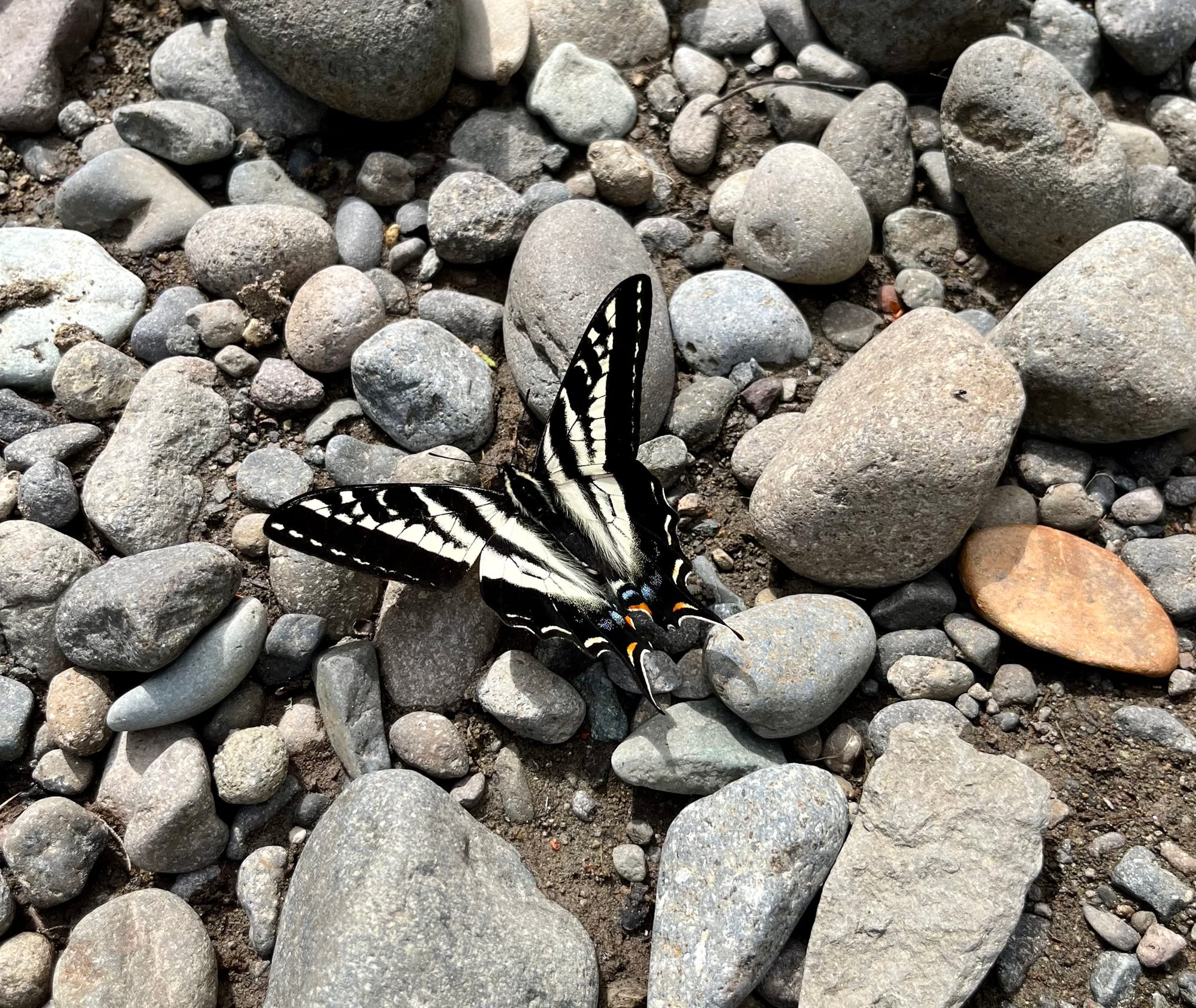
Abundance, unevenly distributed
It would take a magic wand to make the Clackamas the perfect trout fishery. The riparian corridor rebounding is just one piece of the puzzle.
Ideally, we see an influx of food items in the form of terrestrials, like carpenter ants and beetles. These organisms can flourish in new streamside areas, and if they fall into the river provide food for a hungry trout.
There isn't much that can be done to change the river's topography, though. The whole system's gradient is high, so the water is swift. Thus aquatic insects are less numerous than they would be on a gentler stream. And as go the bugs, so go the trout.
The trout you'll catch in the Clackamas watershed will be hard-earned. You'll have to hike and sweat, then be silent and stealthy in your presentation.
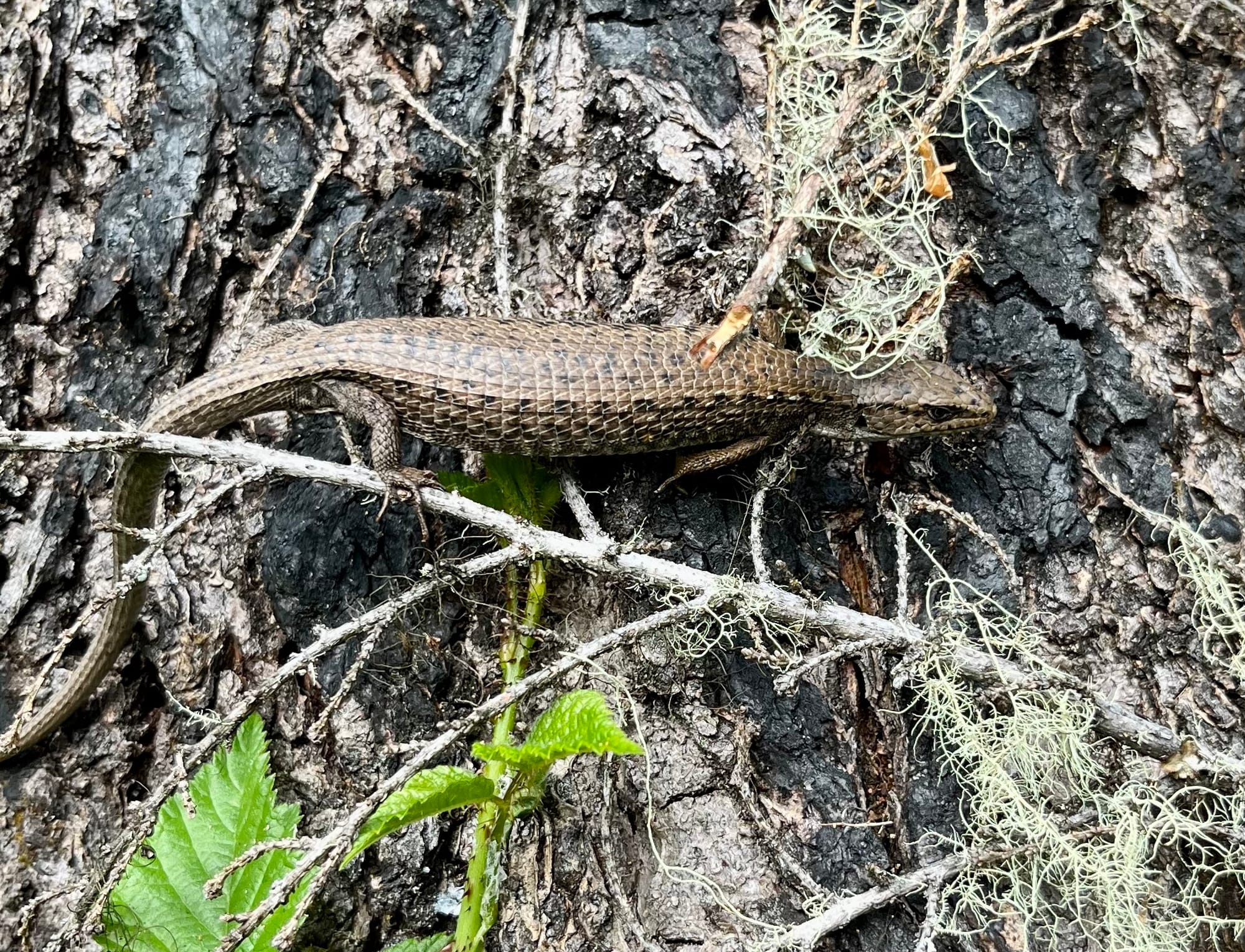
Countering human negligence
Covid and the fires closed put the bureaucratic function of this stretch of the National Forest on life support. Resources went to removing dangerous trees, and salvaging whatever timber could be harvested.
Campsites and roads were closed, and recovery efforts continue, but nefarious behavior persists.
In just a few hours fishing, I managed to witness all sorts of evidence of antisocial behavior and irresponsibility.
From this colorful trash haul, to a fellow forest-goer rinsing semi-auto clip in the next campsite down the road. And oh so much unburied human poop.
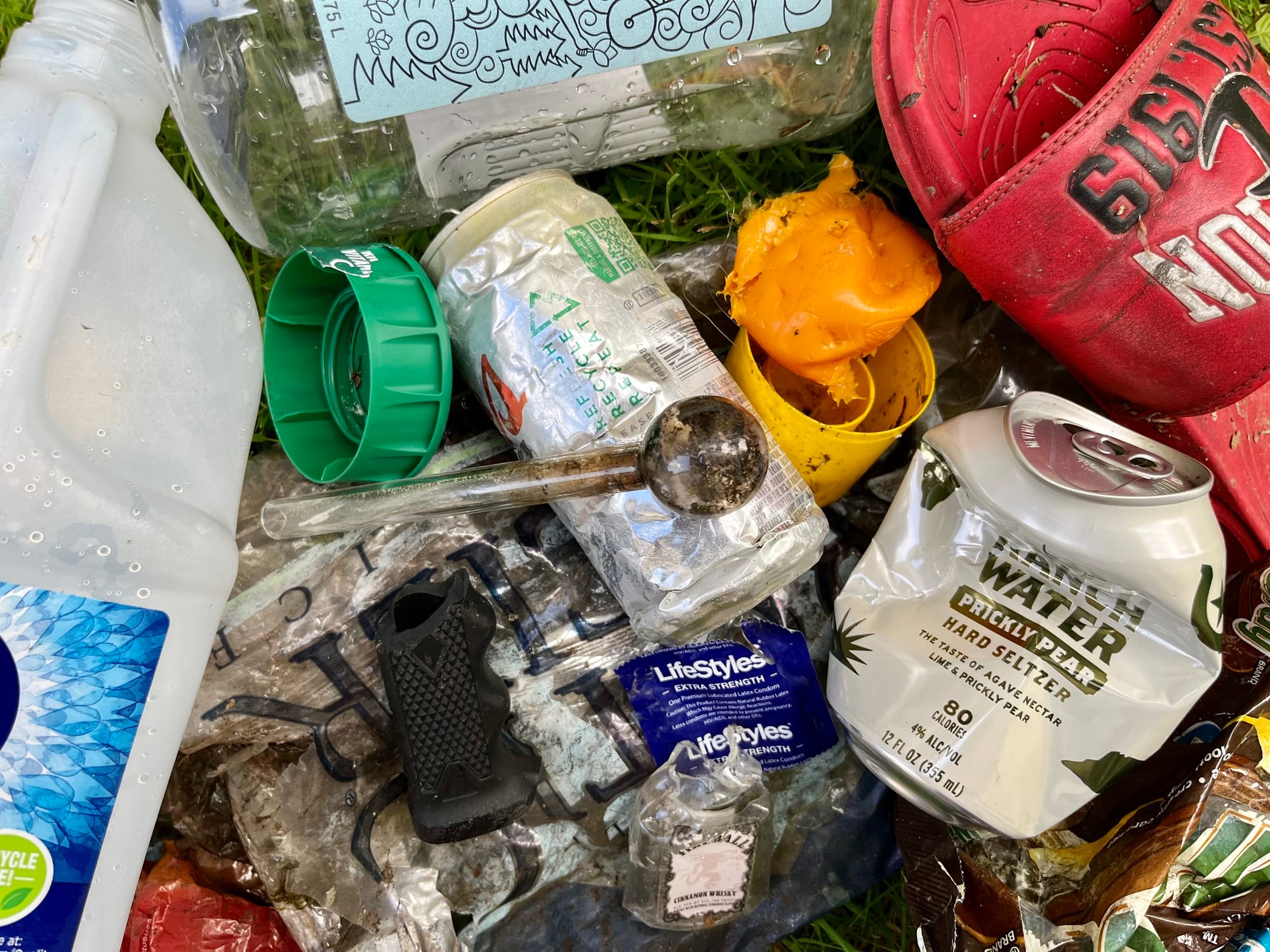
Setting up a better future
It's our turn to help nature out and continue the post-forest-fire renewal.
Salmonids need a perfect balance of factors to merely exist. Our impact makes that more and more difficult to manage.
This area's return to health depends now on us, the visitors. To be responsible guest. To pack out trash, and dispose of waste appropriately. To fish in ways that reduce fish mortality.[1] And to be really, really careful when it comes to fire.
Fifty years ago you could catch trout within Portland city limits. Urbanization continues to trample the natural world, shrink habitat, and make these perfect ecosystems more inaccessible.
I'm not without optimism. The alternative would be too depressing. Several new campsites around Ripplebrook are on the cusp of re-opening, which may have the effect of concentrating visitors in easier-to-manage areas, and bringing more eyes to the area.
Please, wherever you are, when you fish, just bring along a trash bag, and grab some litter on your way out and make sure it gets to the right place.
Practice catch-and-release fishing with barbless hooks (crimp them down with pliers or a hemostat). Keep caught fish wet in the net while you take a photo or remove the fly. Handle them with wet hands as little as possible. ↩︎
Further reading
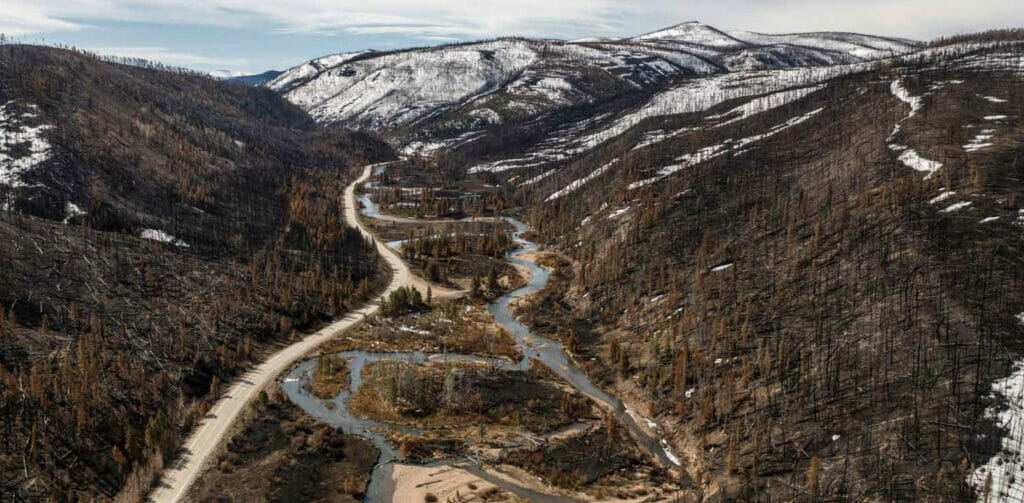

Events
The Deschutes River Alliance is hoping to build on the success of TroutFest in Maupin to continue to bring awareness to Deschutes River issues. It's hosting a screening in a few weeks of a new documentary film about the river.
The Last 100 Miles will premier at Cinema 21 (616 NW 21st Avenue) on Tuesday, July 9th at 7:15 p.m.
Planning on attending? Let me know!
Upcoming classes
Classes for Portland Community College's summer term are now full. I'm keeping a waitlist for both.
If you've emailed me, I have your name down and will fill any spots that come available in the order I've received requests. If you want to be added to the waitlist, send me a note. I wish the PCC system was a little more capable here. Alas.
You can find more info on classes here. Spread the word if you know anyone who should take either course.
🚧 New on CFS
Here's what's new on the site this week:
I'm always looking to understand the sort of information y'all are interested in. You can just send a reply to this email and let know.
What sort of coverage would bring more meaning to your fishing?



